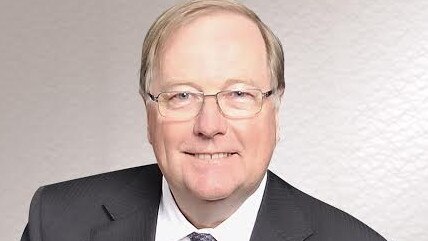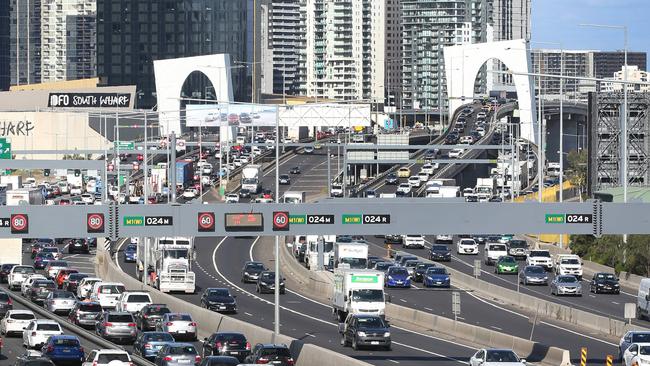Why Metro Tunnel won’t fix Melbourne congestion
It’s a multibillion-dollar flagship project, but the new Metro rail link won’t be enough to deal with Melbourne’s congestion woes, a top planner says. Here’s why.

VIC News
Don't miss out on the headlines from VIC News. Followed categories will be added to My News.
Expensive road and rail projects serving the CBD will not solve Melbourne’s congestion problems, says a top planner.
Former Victorian Planning Authority chief executive Peter Seamer said projects like Metro Tunnel were needed to keep up with rapid population growth but were limited in their overall benefit.
“We have some radial rail and freeway projects that will help manage today’s congestion problems, and are popular, but will make the CBD more crowded and ultimately, they in turn will become congested,” he said.
NIGHTMARE COMMUTE LOOMS AS TRAIN LINES DOWN
METRO TUNNEL STATION CONSTRUCTION
PETER SEAMER: GET SMART TO BUILD A BETTER CITY

Mr Seamer, who has just published the book Breaking Point: The Future of Australian Cities, wants governments to launch campaigns to encourage the development of more job hubs closer to where people live.
“While Melbourne City has 20 per cent of all the jobs in the wider metropolis, it only has three per cent of the population,” he said.
“Melbourne City has 320 jobs for every 100 residents, whereas Melton City has only 20 jobs for every 100 residents … we need to do something about that.”

Mr Seamer said the centralised job situation forced governments to spend more on expensive underground rail systems, and forced people to spend more time in cars or trains.
“Currently we do not make optimal use of employment areas in the suburbs,” he said.
“To make these centres into bustling urban hubs of activity they must be well-serviced by transport, and they must provide the urban amenity and connectivity that businesses and workers desire.”
Mr Seamer said the Andrews Government’s “adventurous” proposed Suburban Rail Loop was a perfect localisation project, and he praised the level crossing removal program, although it was “overdue by 50 years”.

The former planning supremo said the government’s top priorities should include developing powerful job hubs around major activity centres like Monash, Latrobe, Box Hill and Dandenong, and new ones in places such as East Werribee and Donnybrook.
“The state government in the past haven’t focused on this, usually leaving it to councils,” Mr Seamer said.
“They need to see this investment as offsetting transport costs.”
Mr Seamer, a former CEO of several councils, also called for more flexible planning controls to allow higher housing density around business areas.
“We can amend planning controls in business and technology precincts to allow more flexibility for activities that support employment such as childcare, trendy coffee places, bars and restaurants,” he said.
Mr Seamer said action needed to be taken because Melbourne’s population would likely double to up to 10 million by 2050, and “we probably can’t stop this growth”.


